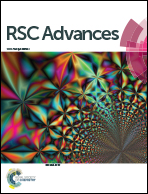Stereoselective synthesis of 1,6-dioxaspirolactones from spiro-cyclopropanecarboxylated sugars: total synthesis of dihydro-pyrenolide D†
Abstract
An efficient method for the stereoselective construction of 1,6-dioxaspiro[4.n]decan-2-one systems (n = 4, 5) from sugar derived spirocyclopropane carboxylic acids involving a one-pot ring-opening and cyclization reaction is revealed. The generality of the methodology and its application in the total synthesis of dihydro-pyrenolide D and 4-epi-dihydro-pyrenolide D are reported.


 Please wait while we load your content...
Please wait while we load your content...